Sample Letter of Medical Necessity for Special Tomato® CatchUp Chair™
The Sample Letter of Necessity below includes guidance as well as examples you can tailor to your own needs.
Tip: Contact the beneficiary's insurance company and ask them to provide you with their definitions of medical necessity. Be sure to include all components in your letter while using the samples below as a general guideline.
Insert Date
Any Insurance Company
123 Any Street
Any City, Any State 12345
Re: Patient's Name
DOB: Patient's DOB
ID #: Insurance ID # in the case of private insurance and /or public assistance.
Address: Patient’s Address
Parent/ Guardian’s Name:
Parent/ Guardian’s Phone Number:
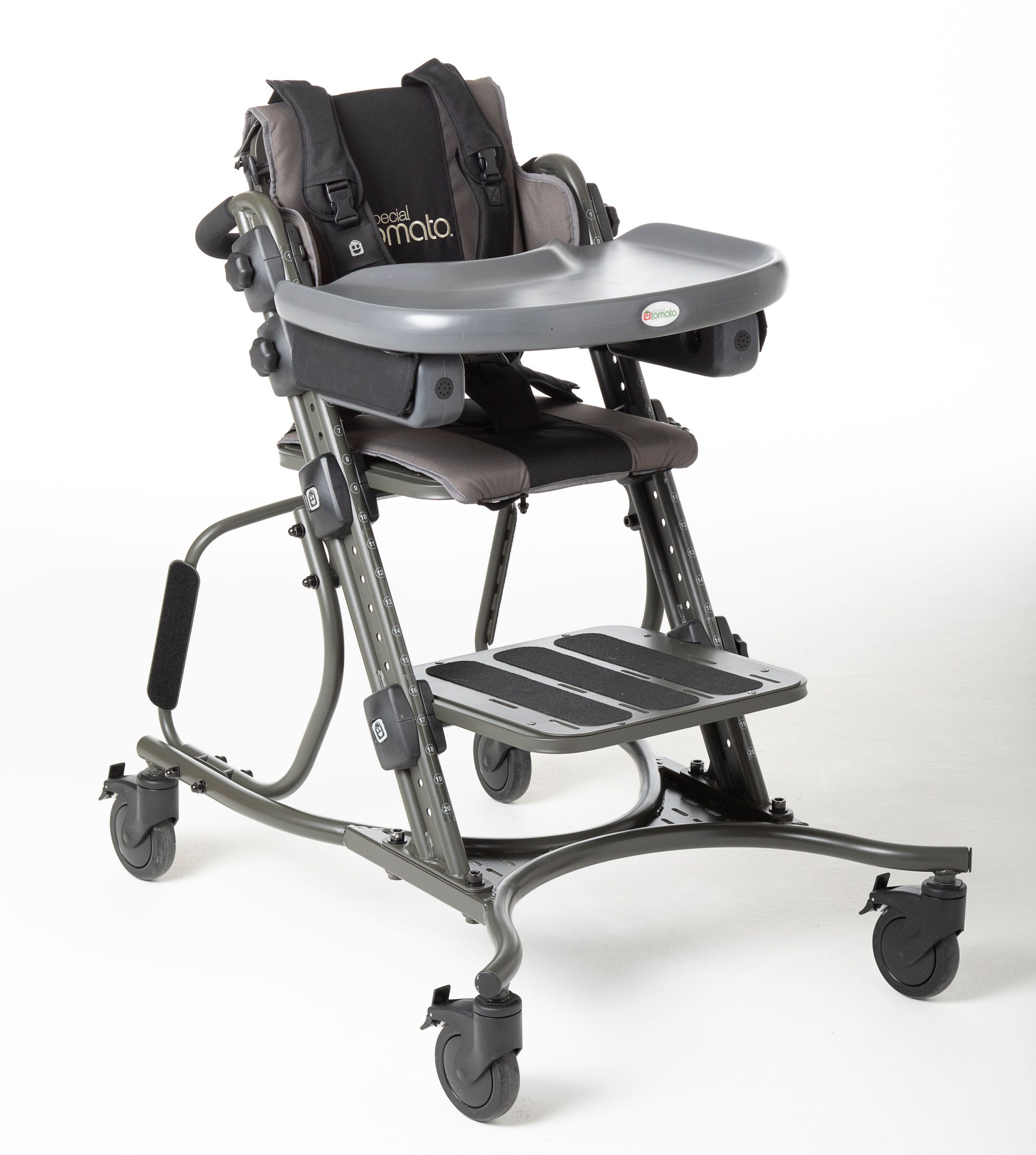

Medical History: Briefly/ succinctly stated including diagnosis with onset date, comorbidities, and surgeries.
Current Medical Status and Functional Status: Explain the beneficiary's condition with emphasis on functional ability and impairments. Make the reader “see” this child. Include all durable medical equipment this child is already using.
Example: Mateo is an 11 year old boy who was diagnosed with spastic diplegic cerebral palsy at 11 months old. He was born prematurely at 29 weeks gestation. Underlying pathology is periventricular leukomalacia (PVL). Mateo was discharged home with his parents from the NICU after 10 weeks. He received Early Intervention and Preschool Services for Physical Therapy, Occupational Therapy and Speech Therapy. Mateo is currently a 5th grade student at Creekside Elementary School. He walks independently on level surfaces with the support of forearm Lofstrand crutches. Gait deviations are consistent with spastic diplegia. Mateo can ambulate for functional distances at home and school but requires increased time. He requires moderate assistance to walk up and down stairs with one hand on the railing and the support of one crutch. He most often uses the elevator at school to move between floors. He is not able to run or jump. Mateo displays persistent core weakness and mildly impaired upper extremity function. He can move between
sitting in a chair and standing independently using the chair’s armrests. Cognitively, Mateo functions at age/grade level and is currently in a general education classroom. He has begun using a computer with an adapted keyboard for assignments that require extensive writing. Mateo wears bilateral dynamic ankle foot orthoses (AFOs). He currently sits in the classroom in a TherAdapt School Chair (SC-200) with armrests, butterfly kit (chest harness) and adjustable footplate. He has outgrown this chair. This has negatively impacted his ability to manage his upright posture and his upper extremity function.
Example: Mateo has been classified as a student with a disability. He receives Physical Therapy 1x30 minutes per week and participates in Adapted Physical Education twice a week. Mateo receives Occupational Therapy 2x30 minutes per week and Speech/ Language Therapy 1x30 minutes per week per his IEP.
Current Functional Problems:
- Mateo requires minimum to moderate postural support during prolonged sitting (greater than 15 minutes) to maximize functional use of his arms.
- Mateo requires consistent daily range of motion and targeted activities to maintain functional strength and endurance, particularly as he grows, due to insufficient increases in muscle flexibility, strength, and endurance to accommodate skeletal growth.
- Mateo struggles to maintain independence in functional mobility skills (e.g. pushing up from floor sitting to standing, safely negotiating stairs) as he grows taller and gains weight.
- Mateo requires adaptions to fine motor tasks as academic demands increase (e.g. use of adapted keyboard).
- Mild to moderate articulation impairment persists causing Mateo to be hesitant to participate in class group discussions.
Long Term Treatment Goals:
- Maintain range of motion in lower extremities.
- Maintain/ Improve functional strength and endurance.
- Maximize active participation and inclusion in school day activities that require physical activity.
- Maximize upper extremity function while utilizing appropriate compensatory strategies to maintain Mateo’s grade level academic performance.
- Mateo will actively participate in classroom group discussion with minimum frequency of 2x/ week.
Treatment Strategies:
- Range of motion, activities to improve functional strength and endurance, and manage tonal abnormalities and their limiting effects on function.
- Manage fit and wearing scheduled of orthotics.
- Functional Mobility Training to maintain/ improve functional mobility skills.
- Provide Mateo with appropriate durable medical equipment to maximize function and promote inclusion.
- Activities/ Interventions to improve upper extremity coordination and control specifically for adapted written communication.
- Speech and Language therapy to address articulation and hesitancy in use of expressive language skills when in group academic settings.
Current Program of Intervention: List specific functional problems. List long term treatment goals. Describe what is being done to help the child achieve these goals.
Example: As Mateo’s physical therapist, I am requesting funding authorization for a Special Tomato CatchUp Chair with Backrest Extension, Armrests and Special Tomato Seat and Back Liners-Size ML2 Back Cushion, and Size ML3 Seat Cushion. Mateo requires an adaptive seating system that offers postural support beyond what a typical classroom chair can offer to stabilize his trunk in a well aligned upright posture. He is currently using a TherAdapt Classroom Chair that he has outgrown. Mateo’s core postural muscles fatigue with prolonged sitting and it is only with support that Mateo can maximize functional use of his upper extremities. As Mateo has gotten taller, he has struggled to maintain efficiency in his transition between sitting and standing. Armrests are essential for push off to standing and lowering with control for sitting. With a significant growth spurt anticipated as Mateo approaches puberty it will be imperative that he has an adjustable classroom chair that has easy (tool free) seat height adjustment. This will ensure his continued ability to move between sitting and standing safely and efficiently. The footplate on the CatchUp is easily pushed back and out of the way of transfers into and out of the chair. It is also important for Mateo’s safety that he has a chair that is mobile so that he can sit safely and be pushed, for example outdoors during a fire alarm. Mateo would not be safe walking with a large group of quickly moving students. As Mateo moves from the elementary school to the middle school environment, it will also be important that he has a classroom seat that can be easily moved with him by a classmate or teacher. In the middle school environment, it will be important that Mateo’s seat can be adjusted to allow him to sit at different tabletop heights for example at science lab desks and shop tables. With the CatchUp Chair, this can be easily accomplished because height adjustments for all of the chairs support surfaces are clearly numbered and easily moved without tools.
Example: A loaned Special Tomato CatchUp Chair was trialed by Mateo in his classroom from 11/8 through 11/12. It was adjusted for proper fit to be used at his school desk and his therapist and teacher noted marked improvement in postural stability that improved posture of his head, neck, and trunk. Due to improved postural stability, improvements were noted in handwriting and keyboard skills. The height of the seat of the chair was adjusted to optimize ease and safety during sit to stand transfers. The footrest height was adjusted for proper foot placement during sitting and was then pushed out of the way during transfers. Mateo used his arms with hands on armrests to assist with transferring into and out of the chair. Chest and pelvic harnesses offered additional postural support that Mateo could rely on while working at his desk. He was very pleased with the aesthetics of the chair happy, that it looked more like the teacher’s chair than the other student chairs! Mateo’s teacher was relieved to see that this was a chair that Mateo could be seated in safely and pushed out of the building during a fire drill and it could also be used in the auditorium during assemblies. Mateo has been struggling for several years to safely move into and out of the theater seats in the auditorium.
Another seating system equipment trial included the Rifton Activity Chair during the week of 11/1 through 11/5. Ordering the next size up of the TherAdapt Classroom Chair was also considered. The Rifton Activity Chair with accessories met Mateo’s needs for postural support but was significantly more expensive than the Special Tomato CatchUp Chair. The TherAdapt Classroom Chair with accessories also met Mateo’s postural support needs but did not have comparable adjustability for growth. The footrest is stationary and could not easily be moved out of the way during transfers. Making needed adjustments is much more time consuming and the small casters on the mobile base do not offer that same level of maneuverability as the CatchUp Chair.
Rationale for Treatment with Therapeutic Equipment: Describe how the piece of equipment will medically benefit the child. What might be the medical impact if this piece of equipment is denied. Identify the aspects of the child’s life that the equipment will be of assistance and how will it improve the child’s level of function. Identify how the equipment will enable treatment goals to be met. Be specific.
Item
Description
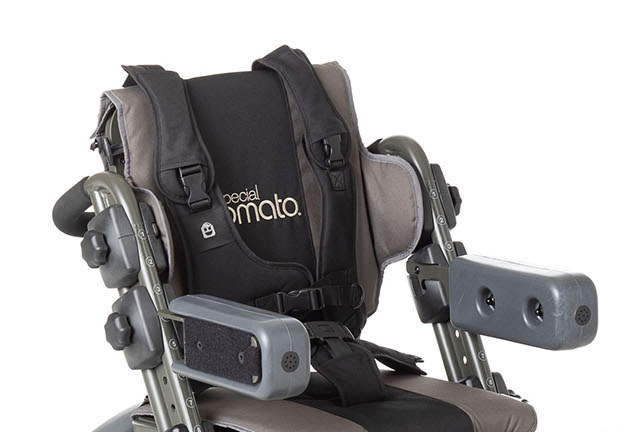

Height Adjustable Armrests offer the sitter a place to rest their forearms. Weight bearing through the arms helps provide greater stability in the upper trunk which is the foundation for the position of the head and neck. This is especially important for individuals who have decreased strength and endurance of core muscles.
The Special Tomato CatchUp Chair has a compact design making it an excellent choice for schools, therapy clinics, and hospitals as well as homes. Simple, tool-free adjustments to the seat and footplate make it easy to perform quick adjustments. The CatchUp Chair offers a high degree of adjustability. Seat depth, seat to footrest height, seat to floor height and backrest height are all adjustable in 1 in. increments. Each graduated adjustment is numbered so it is easy to note the proper configuration for different tabletop heights. This chair can also achieve a perfect fit for individuals with special needs who are not typically proportioned.
Features of the Special Tomato CatchUp Chair include:
- Sturdy, Stable and Compact Chair Design
- Adjustable Seat Height from 13 in. to 29 in.
- Adjustable Seat Depth from 11in. to 17 in.
- Adjustable Seat Back Height- back height is 14 in. when it is directly in contact with the seat. It can be raised above the seat in 1in. increments.
- Adjustable Seat to Footrest Height from 4 in to 18 in.
- Footrest can be pushed back and out of the way during transfers into and out of the chair.
- Seat and Back Pads (Standard) - 1 in. thick foam padding.
- 3-Point Positioning Pelvic Belt (Standard) - Provides an adjustable hip strap with crotch strap that secures the proper position of the pelvis once it is established. All Straps are wide andpadded for pressure distribution and comfort.
- 5-Point Positioning Trunk Harness Small & Large (2 Sizes Standard) – Provides adjustable trunk support independent of the hip strap. The trunk harness helps stabilize a midline position with shoulders back which is the foundation for proper head and neck position. The chair comes standard with both sizes of Trunk Harness. All Straps are wide and padded for pressure distribution and comfort.
- 4 Swivel Locking Casters (5 in.) make this chair easy to move from one place to another using the Push Handle.
- Push Handle (Standard) - Fixed height of 34 in. from floor, extends off frame’s side rails.
- Metal Frame Components are easily wiped clean/ sanitized between uses and ensure years of reliable use.
- Fabric Components (Seat & Back Pads, Pelvic Belt, Trunk Harnesses) are removable for washing
Please refer to the chart at the end of this Letter of Medical Necessity for Itemization of CatchUp Chair Accessories with Description of Medical Necessity for each.
Equipment Trials: What technology has been tried and what were the results. Use objective data and results.
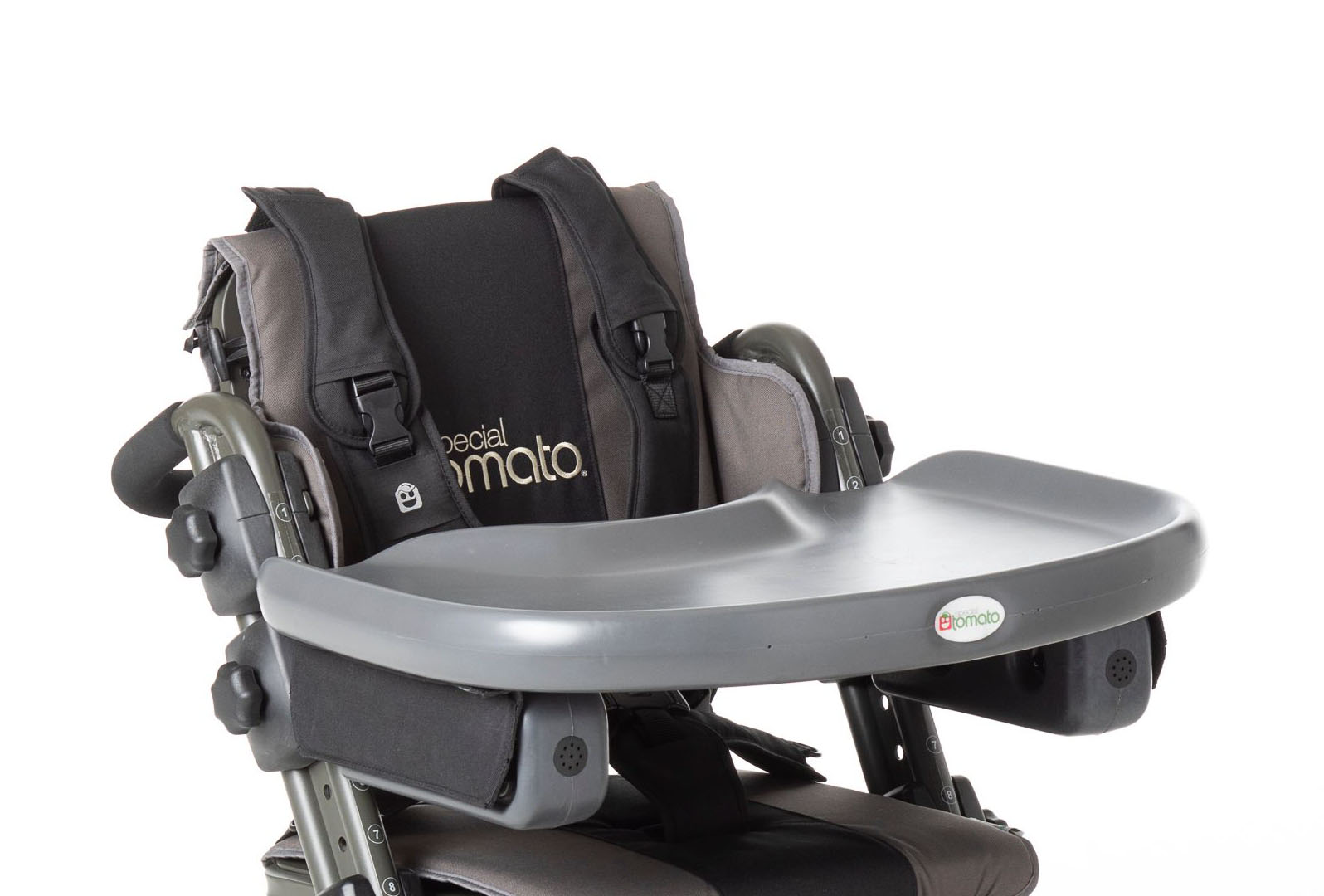

The Tray offers generously shaped dimensions of 24 in. W x 17 in. D x 2 in. H which provides a large area for positioning of the arms for rest and weight bearing. The Tray also provides a work surface at just the right height to optimize functional use of the arms and hands.
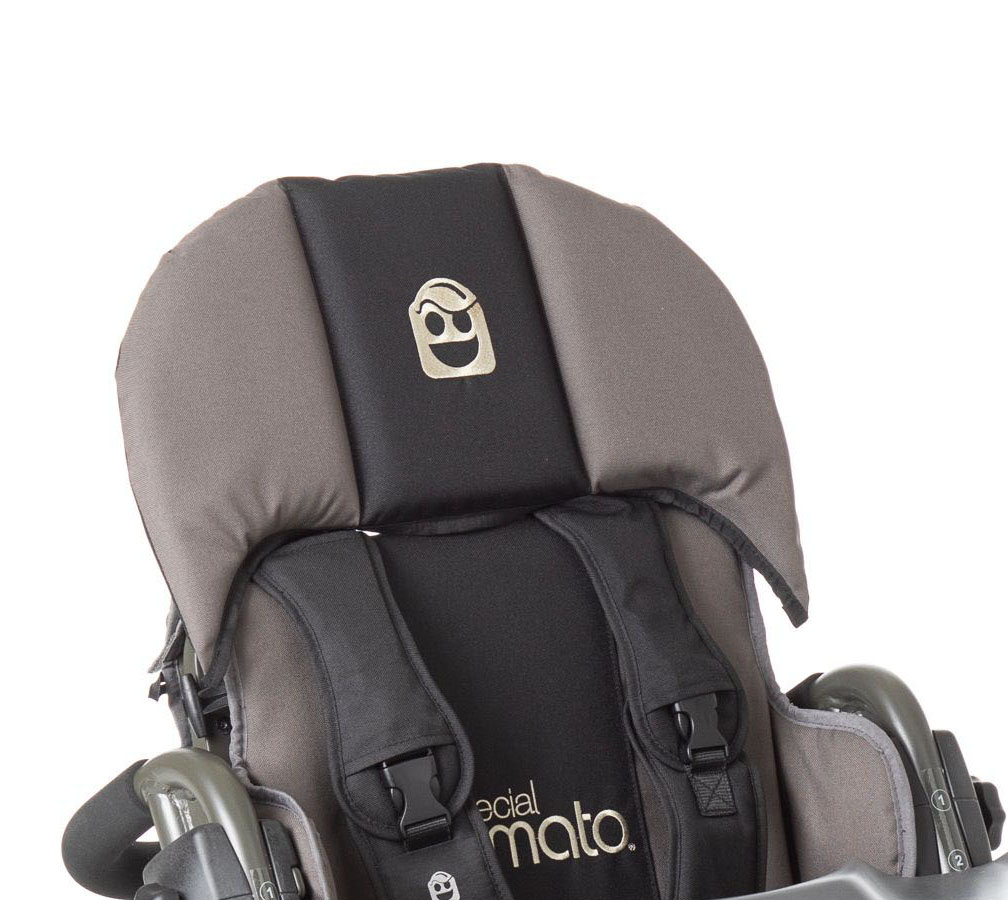

Backrest Extension provides posterior (behind) head support This coupled with a slight recline (10 degrees) in the seat to back angle offer the support needed by individuals with weakness in their core muscles.
Thank you for taking the time to consider this equipment for Mateo. The Special Tomato CatchUp Chair will provide proper positioning for Mateo today and for many years to come as he continues to learn and develop to his fullest potential.
Thank you for taking the time to consider this equipment for Mateo. The Special Tomato CatchUp Chair will provide proper positioning for Mateo today and for many years to come as he continues to learn and develop to his fullest potential.
It may also be helpful to include a picture of the Equipment being requested.
If you have any questions regarding this matter, I can be reached at 1-333-555-4444.
Professional's Name (with signature above)
Professional's Title and Credentials
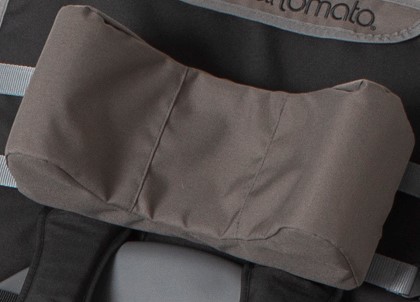

Headrest with Lateral Head Support assists with midline position of the head.
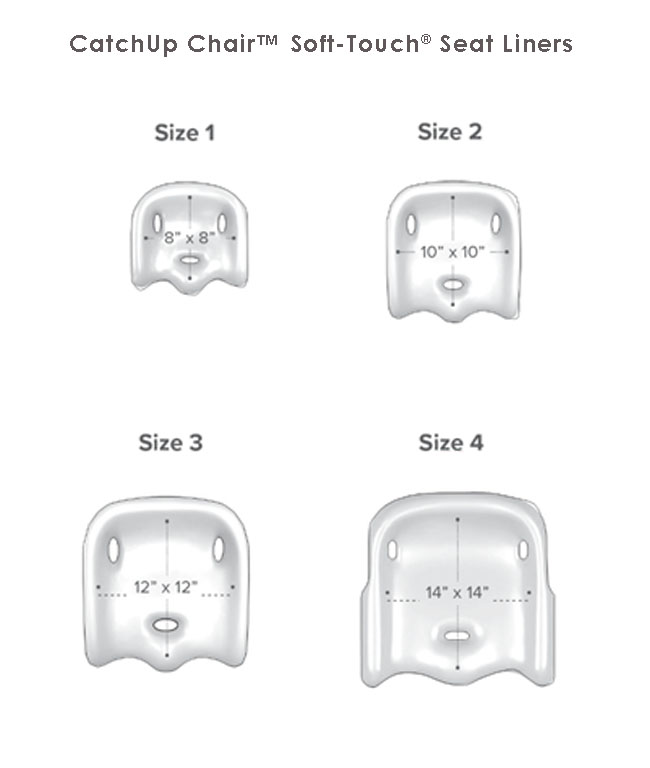

The Contoured Seat Cushion (Soft Touch Liner for Seat) is a comfortably contoured seat cushion molded to provide medial (inside) and lateral (outside) support for the thighs to help keep the hips and pelvis in a well aligned position. The Seat Liner is attached to the CatchUp Chair using adjustable attachment straps. Cushions can be easily/cost effectively replaced when outgrown.
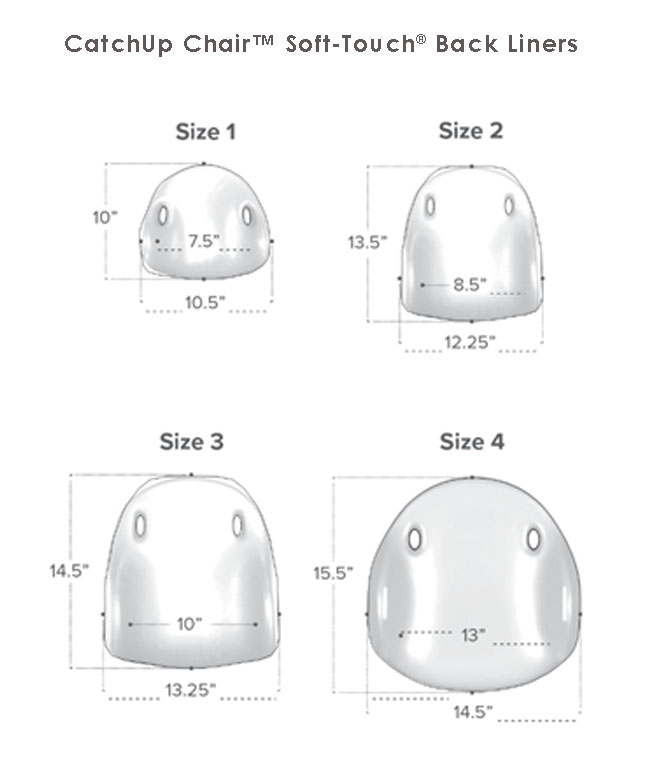

The Contoured Back Cushion (Soft Touch Liner for Back) supports the natural curves of the spine. The Back Cushion is secured to the CatchUp Chair with adjustable straps. All Back Cushions have lateral (side) supports molded into the seat to help the user maintain a midline position. Cushions can be inverted (turned upside down) to raise or lower the height of the lateral support as needed. Cushions can be easily/ cost effectively replaced when outgrown.
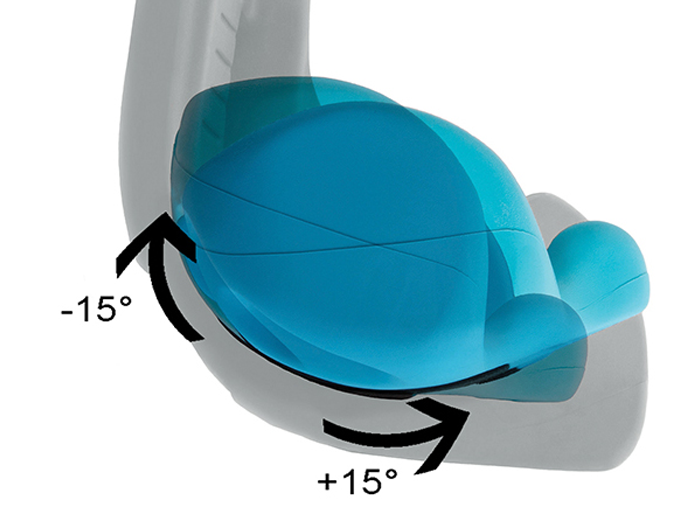

The Contoured Seat Cushion with Hip-Flex™ Adjustment is molded to provide medial and lateral support for the thighs to keep hips in a well aligned position. Hip-Flex™ Adjustment allows the seat cushion to be easily pivoted 30 degrees (15 degrees of hip flexion or extension from customary 90 degrees of hip flexion in sitting) to ensure proper pelvic positioning, the foundation of the seated posture, is optimal.
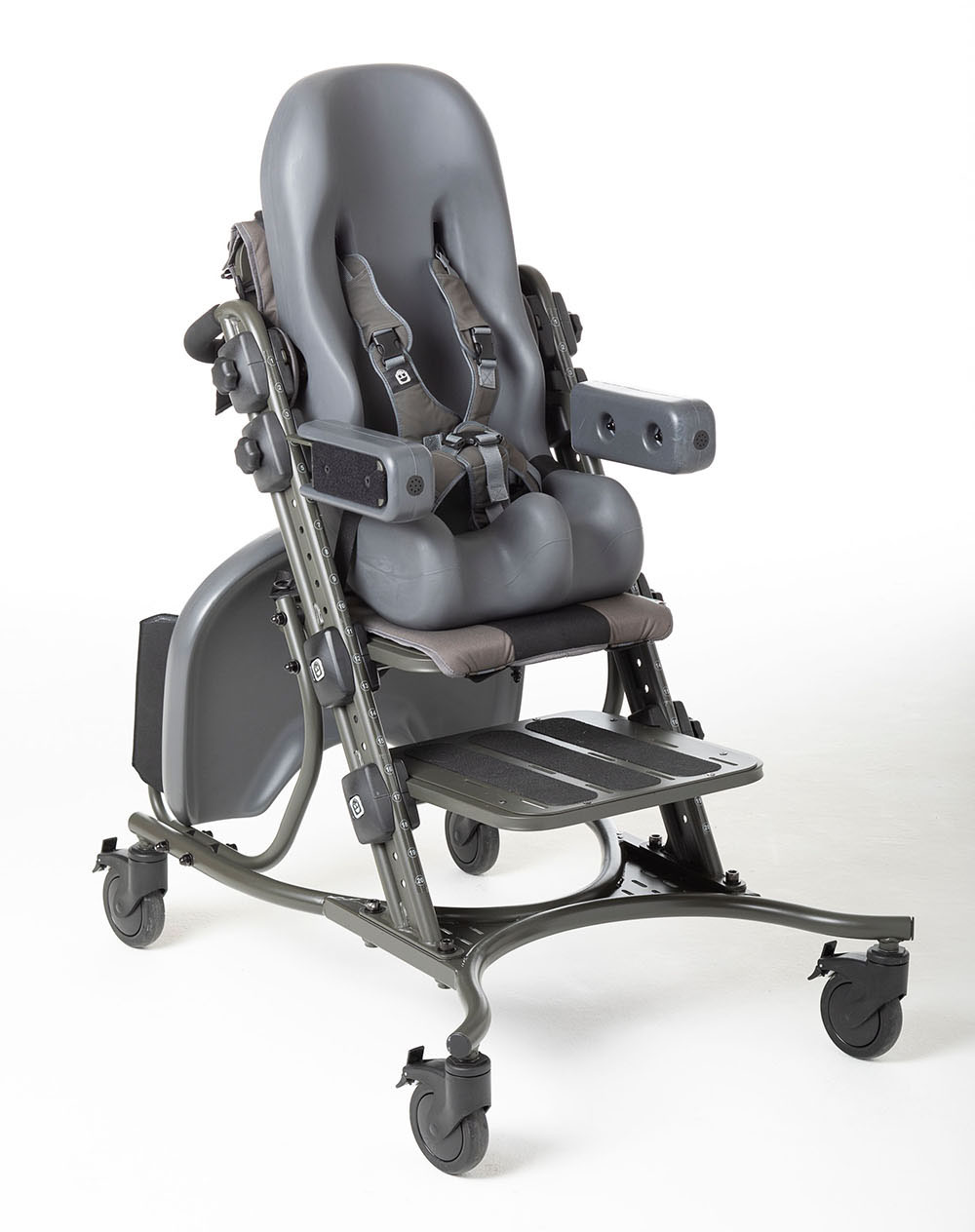

Special Tomato Soft Touch Sitter has a contoured back that supports the natural curves of the spine. Lateral trunk supports and head support (occipital ridge) are molded into the seat itself and will help the user maintain a well aligned upright position. The contoured seat is designed to allow the ischial tuberosities (ITs) commonly called “sit bones” to comfortably sink into the seat thereby creating the stable base required for the foundation of the seated posture. The contoured seat also includes a 15 degree ramped angle with built in abductor. Both features ensure a well aligned hip position that discourages extensor thrusting in the seat. The Soft Touch Sitter with its adjustable attachment straps can be attached to the Catch Up Chair or any stable standard chair. It is a portable postural support seating system that can be easily carried to anyplace you might need one.
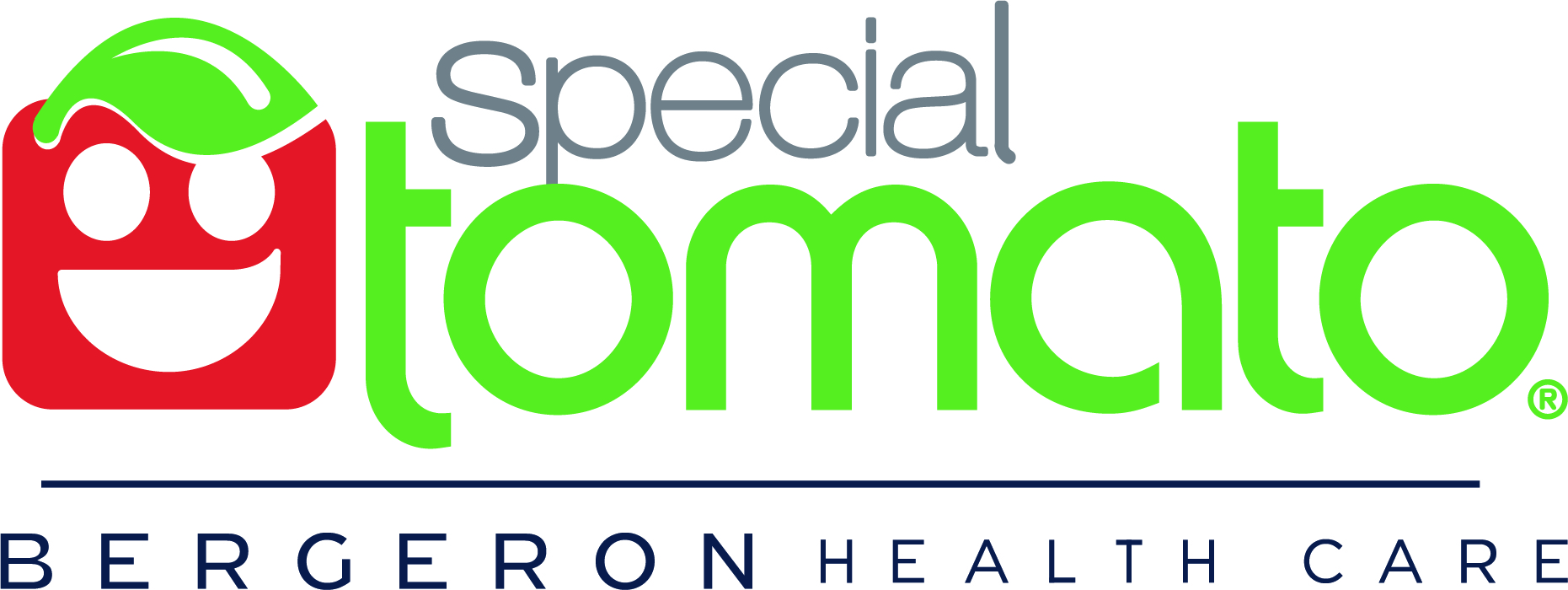

The accuracy of the information provided was compiled & verified from the product user manual and the manufacturer’s website at the time of publication. The sample letters provided are examples based upon the intended use of the product listed and its design applications. Professional client and product evaluation is critical to the clinical advantages and appropriate application of a product for each case submitted for third party payment. There are several factors that affect the outcome of a submission and Bergeron Health Care cannot guarantee favorable outcomes in obtaining third party and insurance payments.

